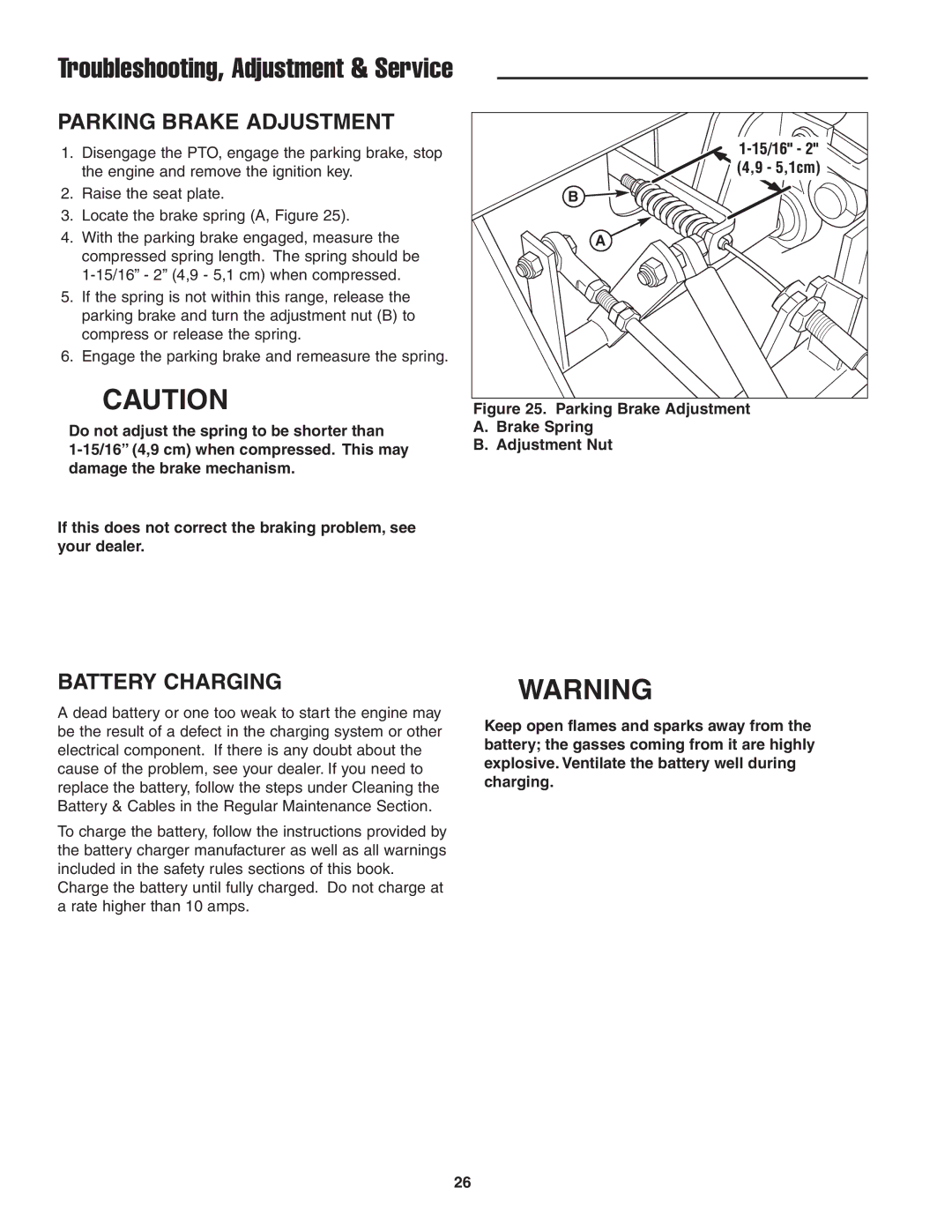
Troubleshooting, Adjustment & Service
PARKING BRAKE ADJUSTMENT
1.Disengage the PTO, engage the parking brake, stop the engine and remove the ignition key.
2.Raise the seat plate.
3.Locate the brake spring (A, Figure 25).
4.With the parking brake engaged, measure the compressed spring length. The spring should be
5.If the spring is not within this range, release the parking brake and turn the adjustment nut (B) to compress or release the spring.
6.Engage the parking brake and remeasure the spring.
![]() CAUTION
CAUTION
Do not adjust the spring to be shorter than
If this does not correct the braking problem, see your dealer.
B |
A |
Figure 25. Parking Brake Adjustment
A.Brake Spring
B.Adjustment Nut
BATTERY CHARGING
A dead battery or one too weak to start the engine may be the result of a defect in the charging system or other electrical component. If there is any doubt about the cause of the problem, see your dealer. If you need to replace the battery, follow the steps under Cleaning the Battery & Cables in the Regular Maintenance Section.
To charge the battery, follow the instructions provided by the battery charger manufacturer as well as all warnings included in the safety rules sections of this book.
Charge the battery until fully charged. Do not charge at a rate higher than 10 amps.
![]() WARNING
WARNING
Keep open flames and sparks away from the battery; the gasses coming from it are highly explosive. Ventilate the battery well during charging.
26
